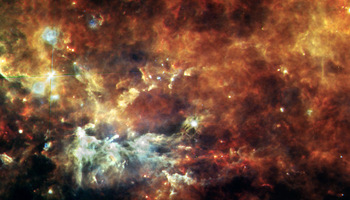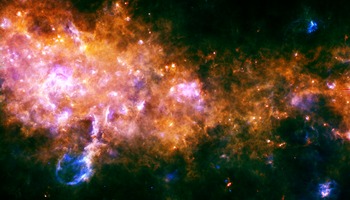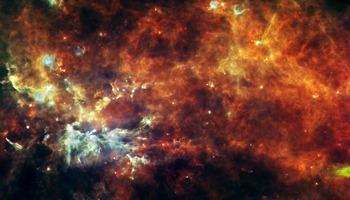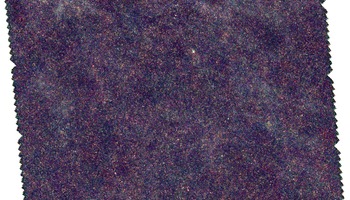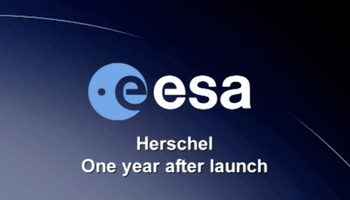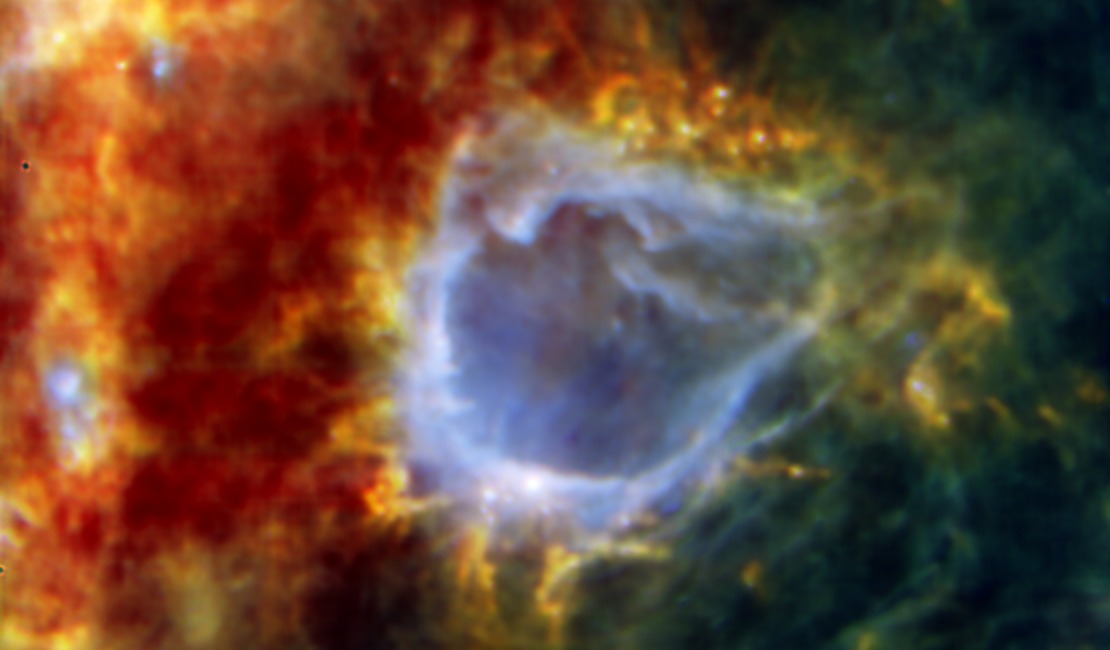
The Galactic Bubble RCW 120
RCW 120 is a galactic bubble with a large surprise. How large? At least 8 times the mass of the Sun. Nestled in the shell around this large bubble is an embryonic star that looks set to turn into one of the brightest stars in the Galaxy.
The Galactic bubble is known as RCW 120. It lies about 4300 light-years away and has been formed by a star at its centre. The star is not visible at these infrared wavelengths but pushes on the surrounding dust and gas with nothing more than the power of its starlight. In the 2.5 million years the star has existed. It has raised the density of matter in the bubble wall so much that the quantity trapped there can now collapse to form new stars.
The bright knot to the right of the base of the bubble is an unexpectedly large, embryonic star, triggered into formation by the power of the central star. Herschels observations have shown that it already contains between 8-10 times the mass of our Sun. The star can only get bigger because it is surrounded by a cloud containing an additional 2000 solar masses.
Not all of that will fall onto the star, even the largest stars in the Galaxy do not exceed 150 solar masses. But the question of what stops the matter falling onto the star is a puzzle for modern astronomers. According to theory, stars should stop forming at about 8 solar masses. At that mass they should become so hot that they shine powerfully at ultraviolet wavelengths.
This light should push the surrounding matter away, much as the central star did to form this bubble. But clearly sometimes this mass limit is exceeded otherwise there would be no giant stars in the Galaxy. So astronomers would like to know how some stars can seem to defy physics and grow so large. Is this newly discovered stellar embryo destined to grow into a stellar monster? At the moment, nobody knows but further analysis of this Herschel image could give us invaluable clues.
Image Details
- Date
- May 6, 2010
- ID
- nhsc2010-005a
- Type
- Observation
- Credit
- ESA/PACS/SPIRE/HOBYS Consortia
Object Details
- Name
- RCW 120
- Subject | Local Universe
- Nebula Type Interstellar Medium
- Distance
- Lightyears 4,300
- Constellation
- Scorpius
Downloads
Color Mapping
| Telescope | Spectral Band | Color Assigment | Wavelength |
|---|---|---|---|
| Herschel (PACS) | Infrared | Blue | 100.0 µm |
| Herschel (PACS) | Infrared | Green | 160.0 µm |
| Herschel (SPIRE) | Infrared | Red | 250.0 µm |


